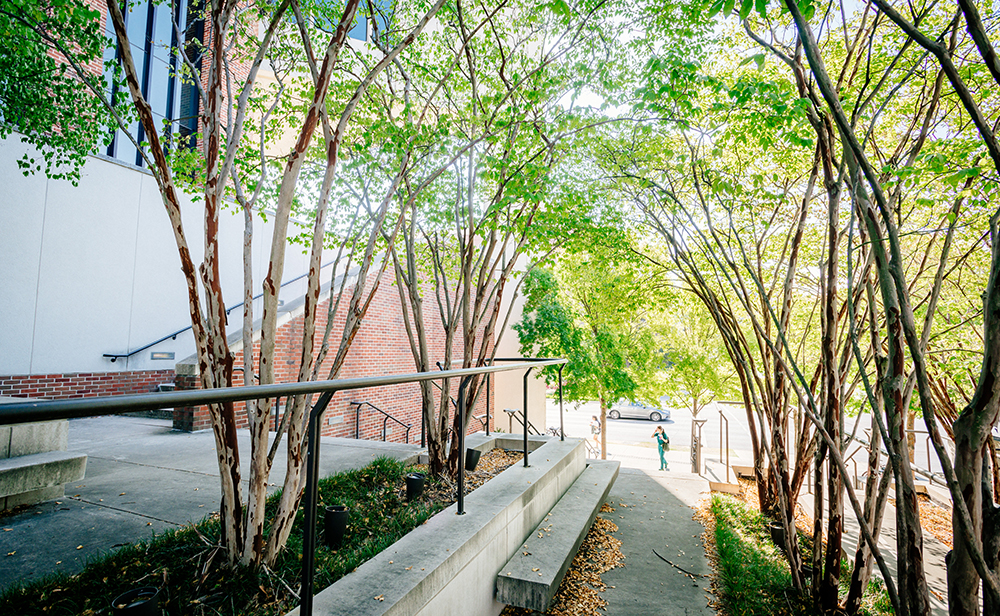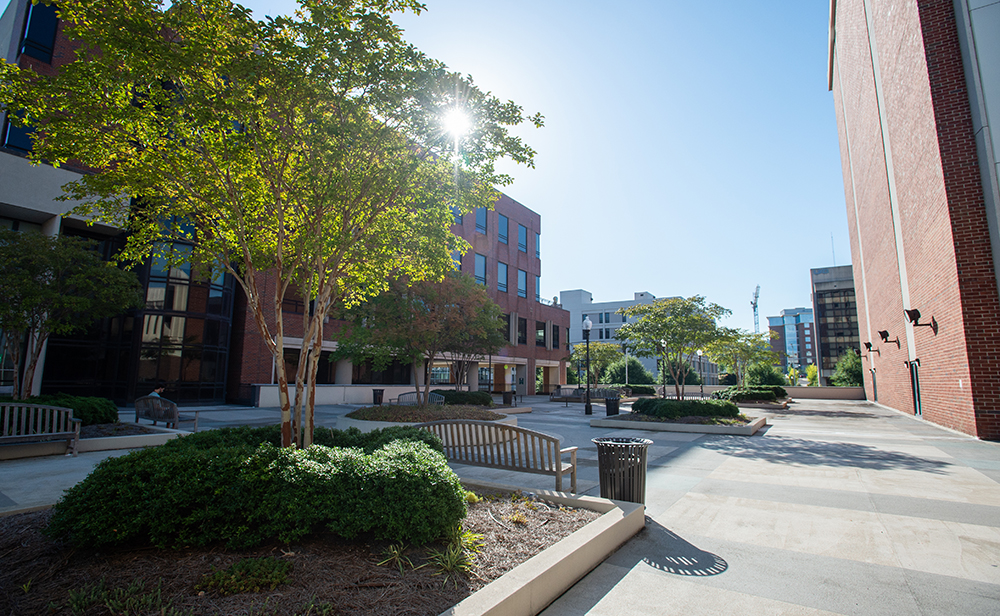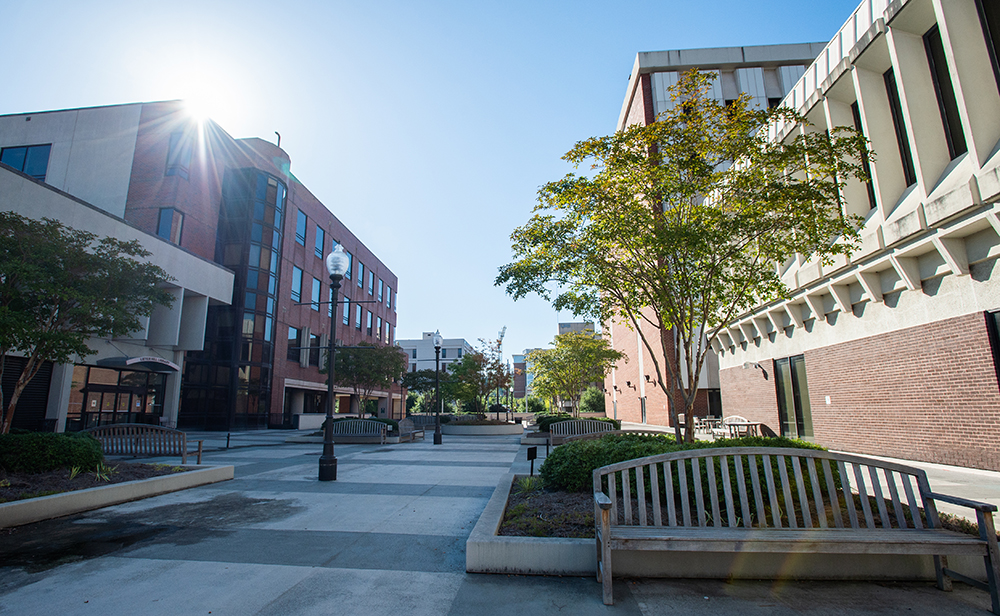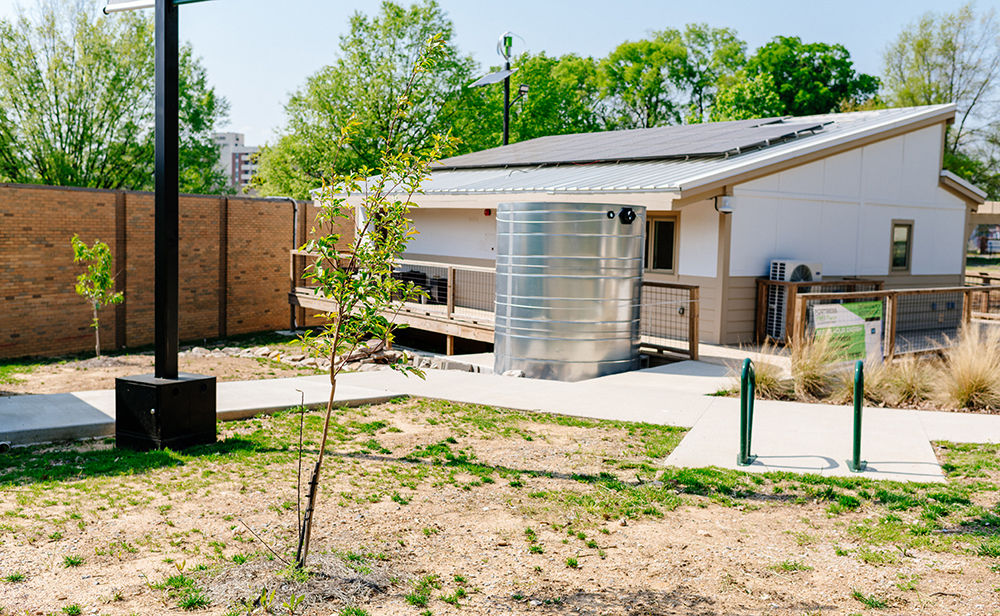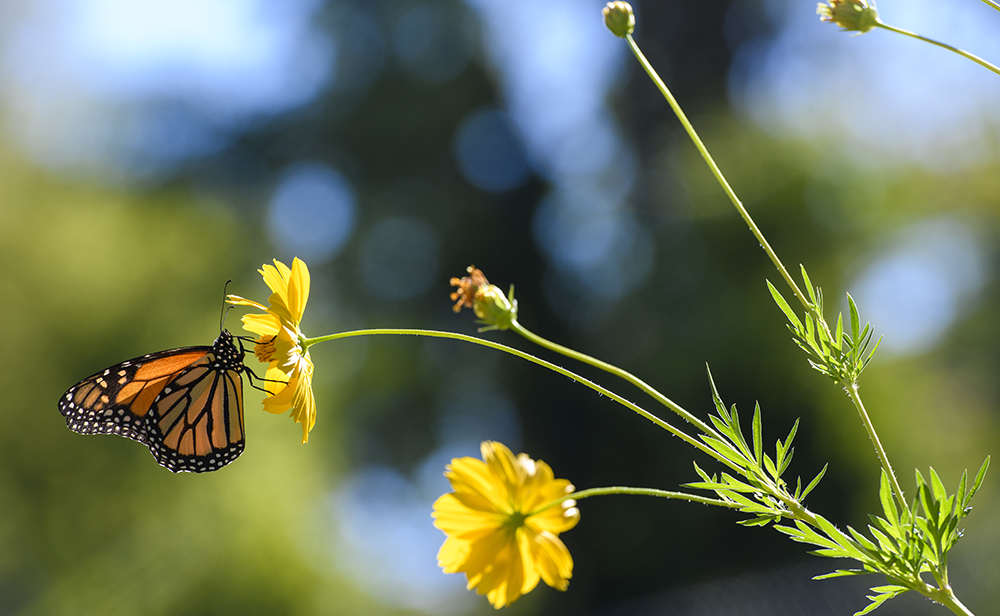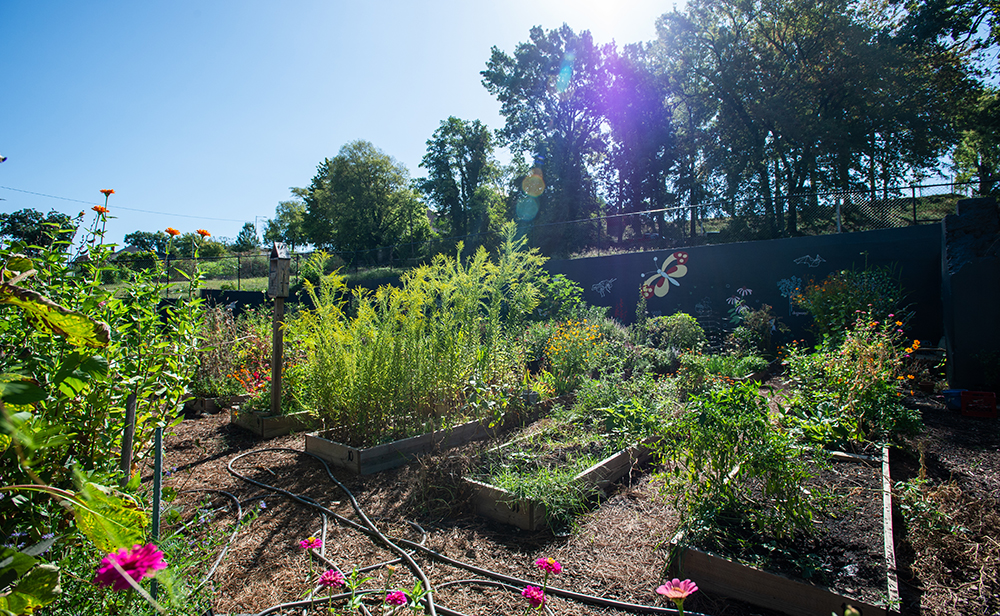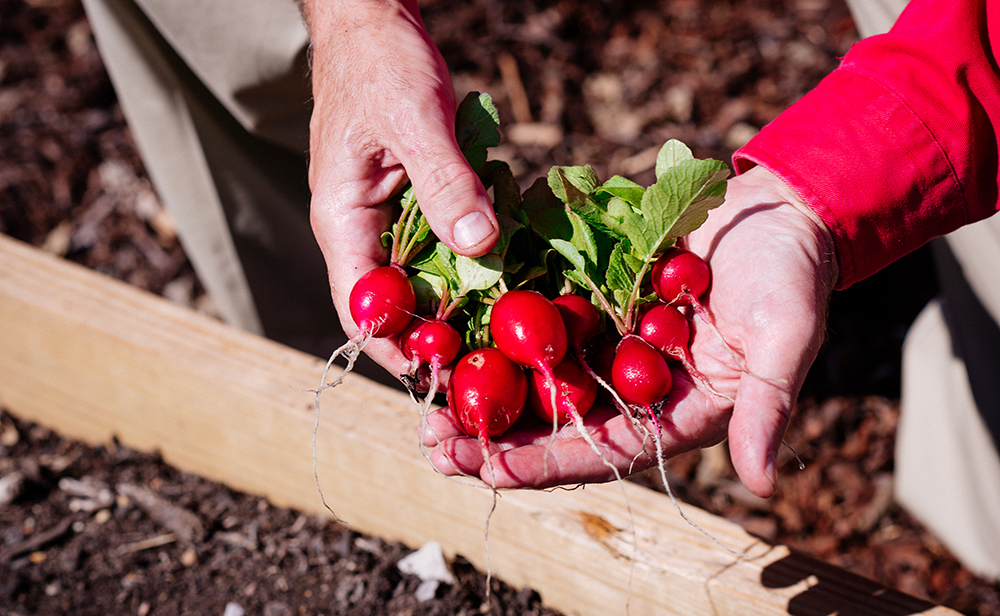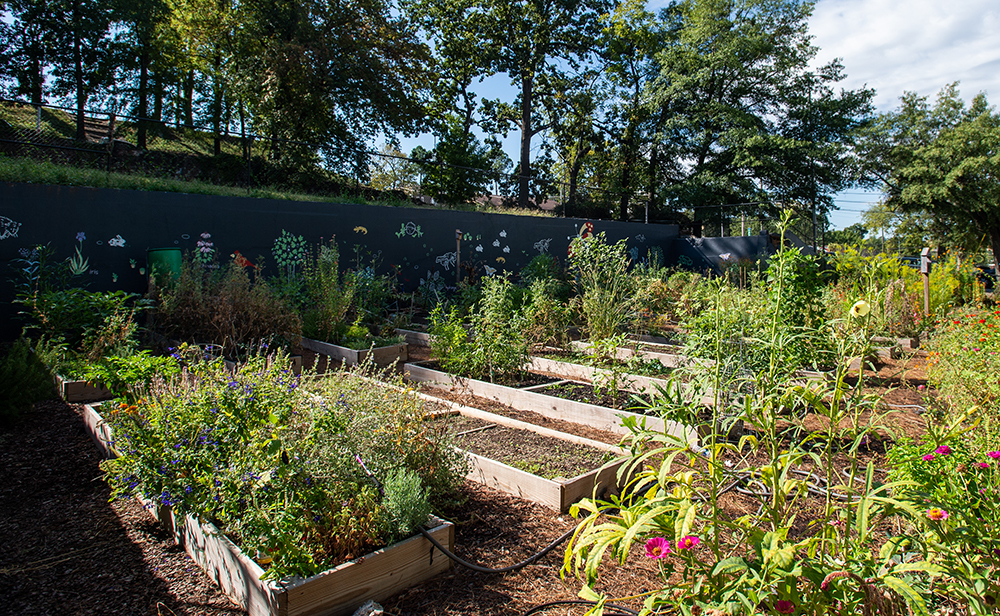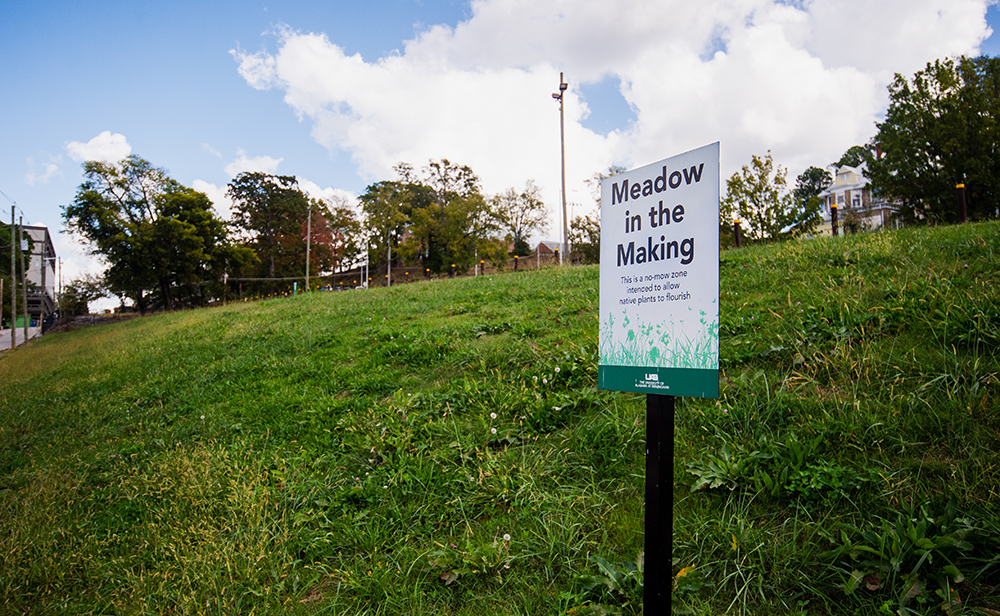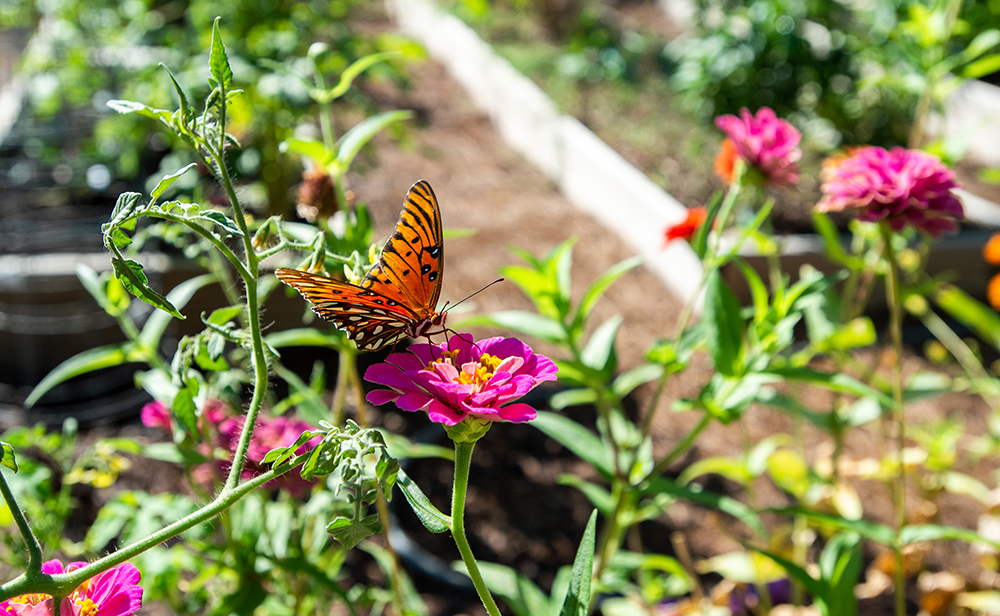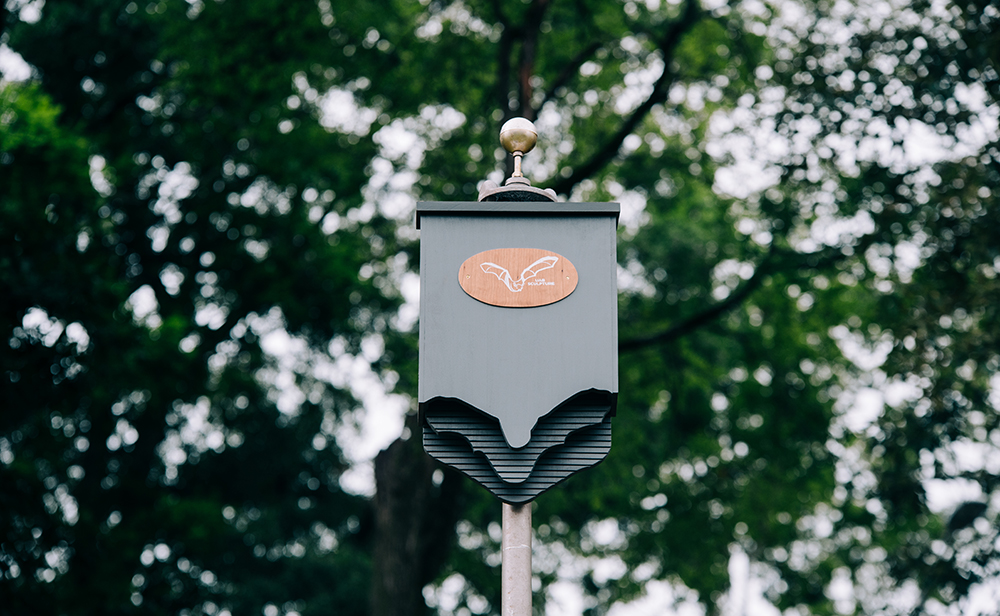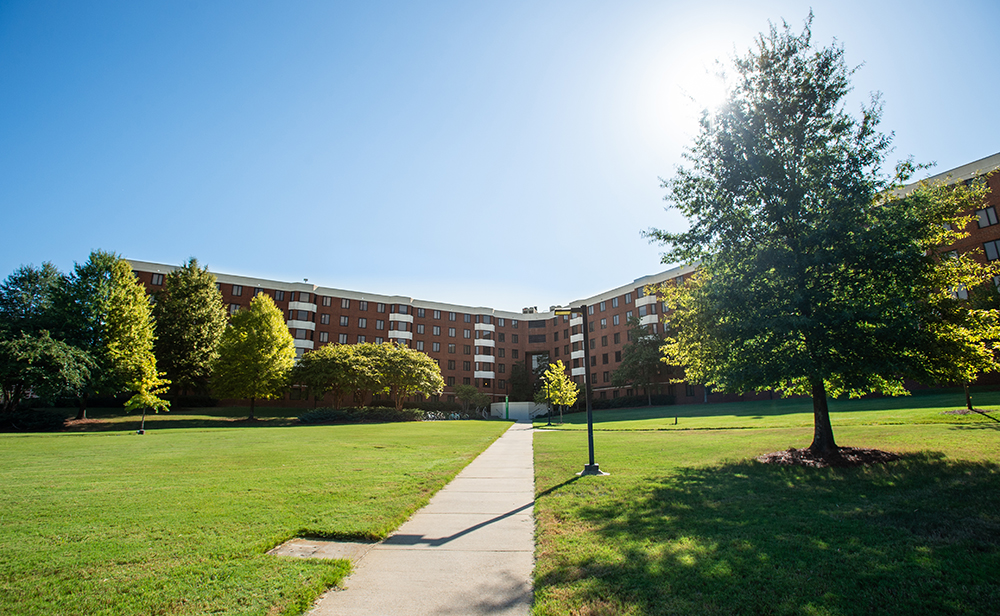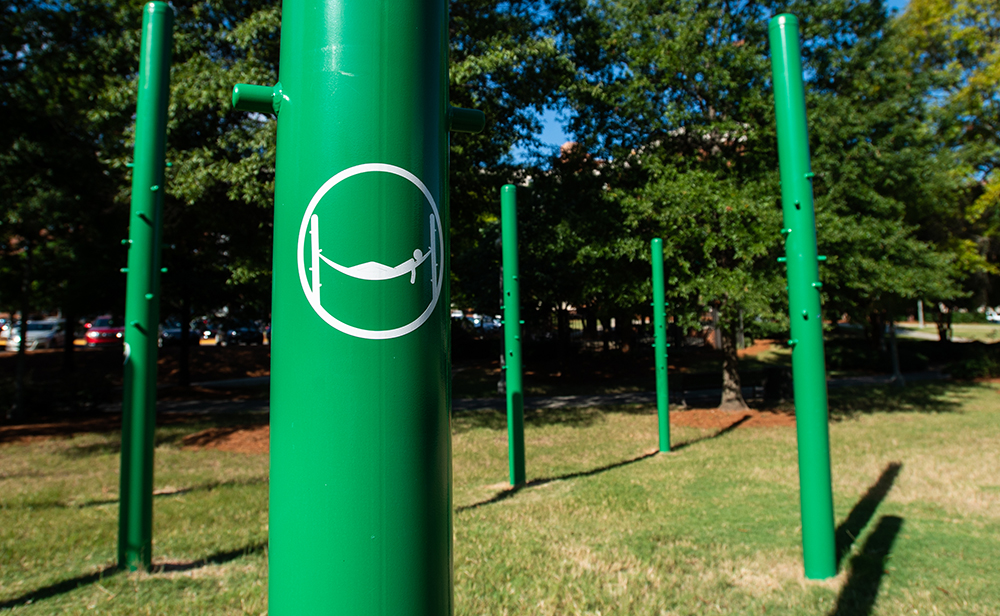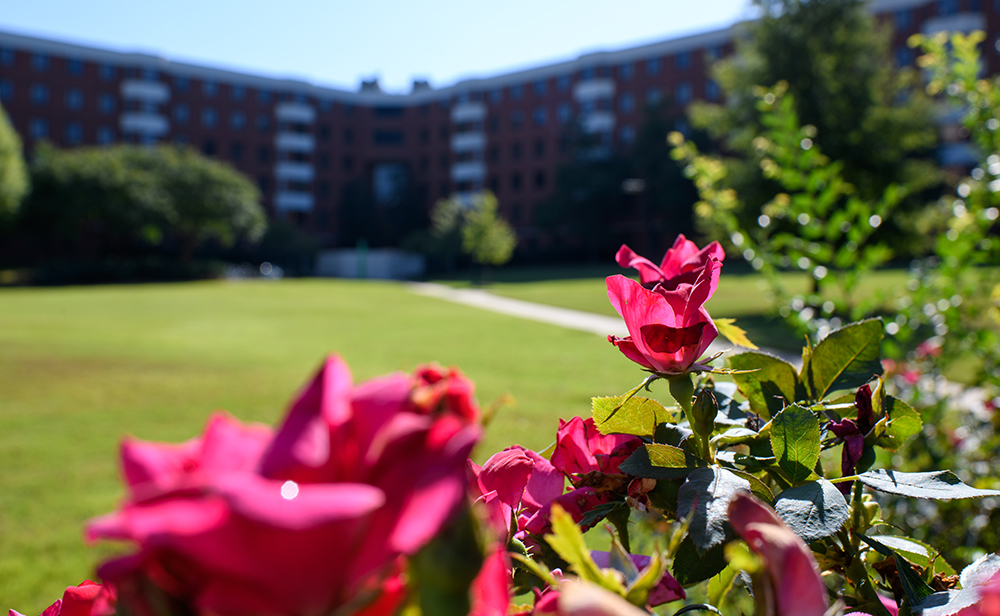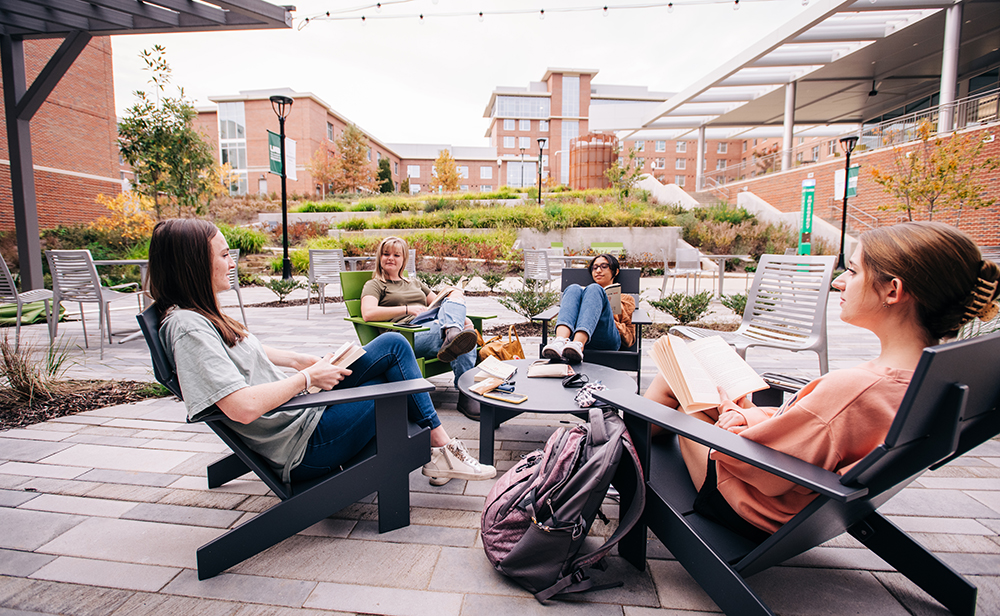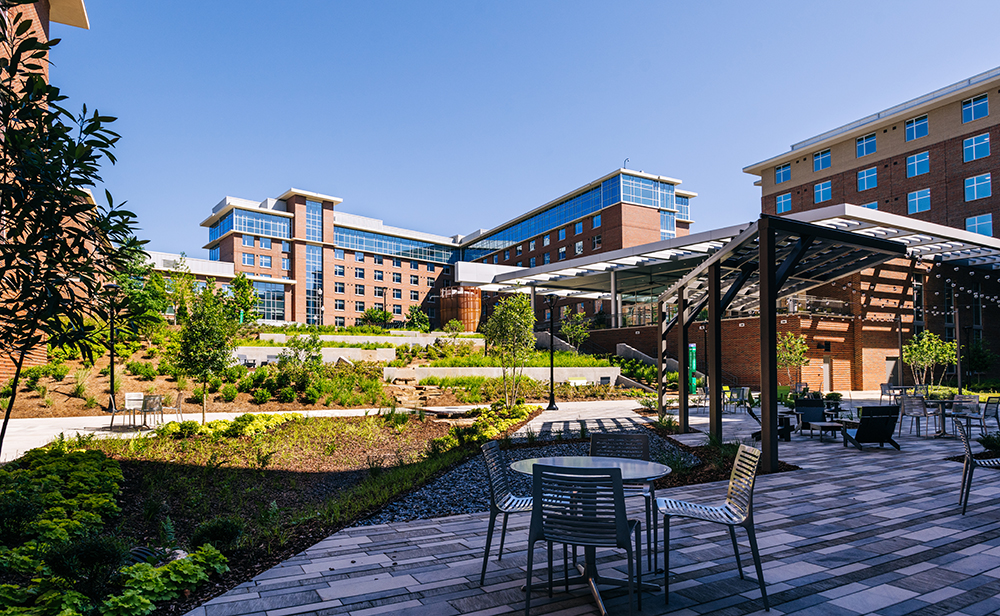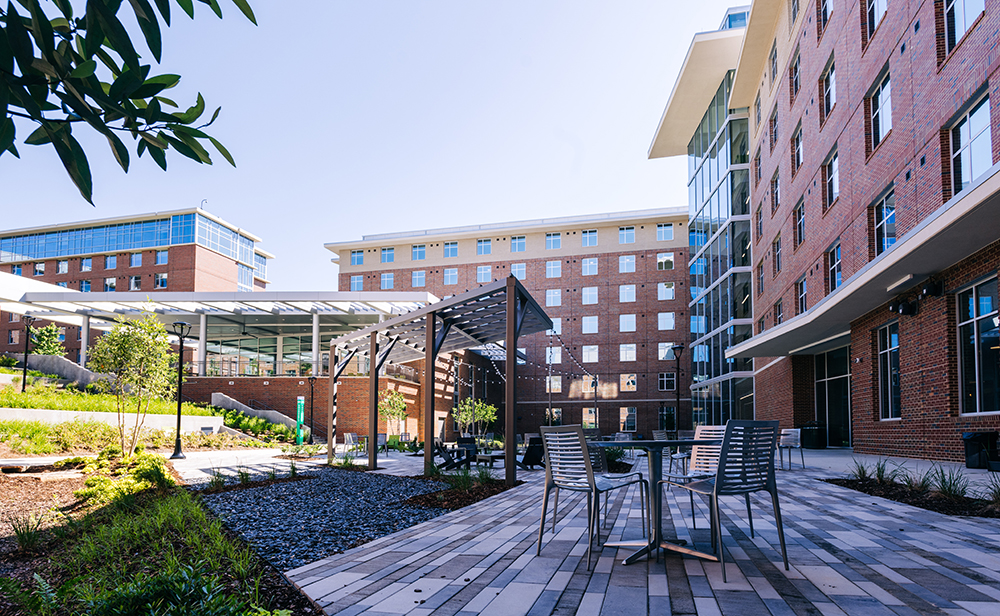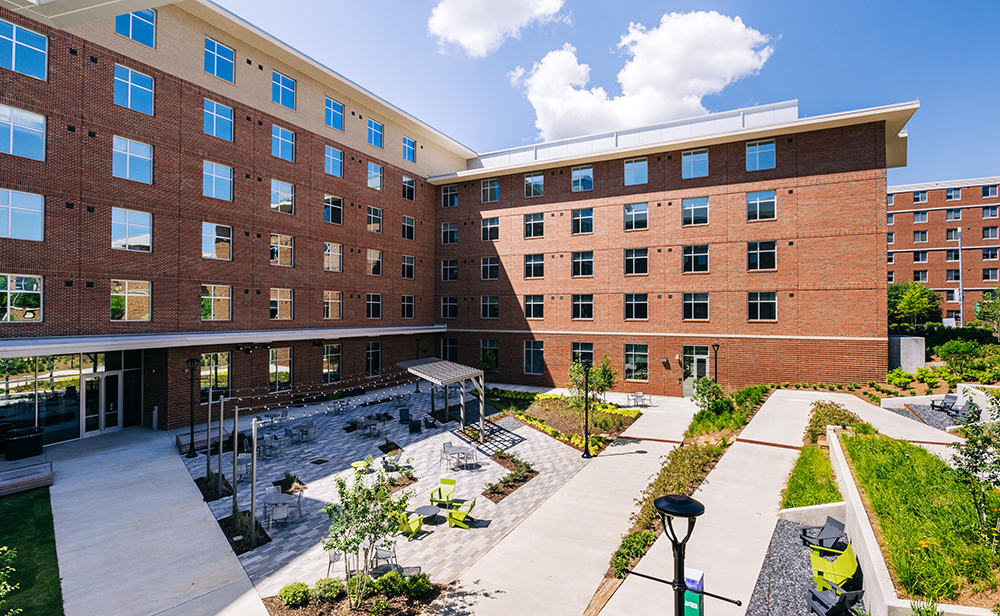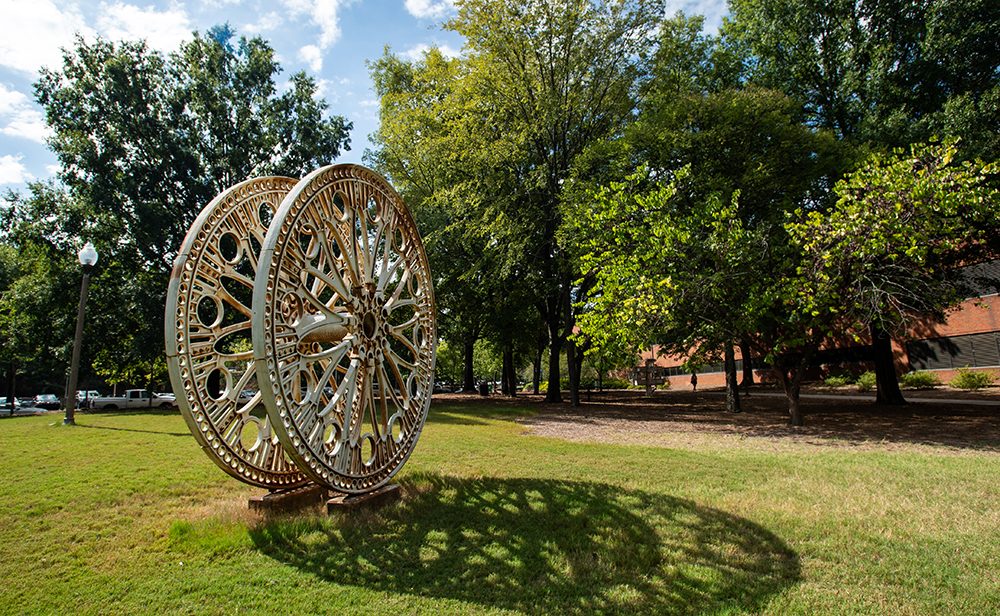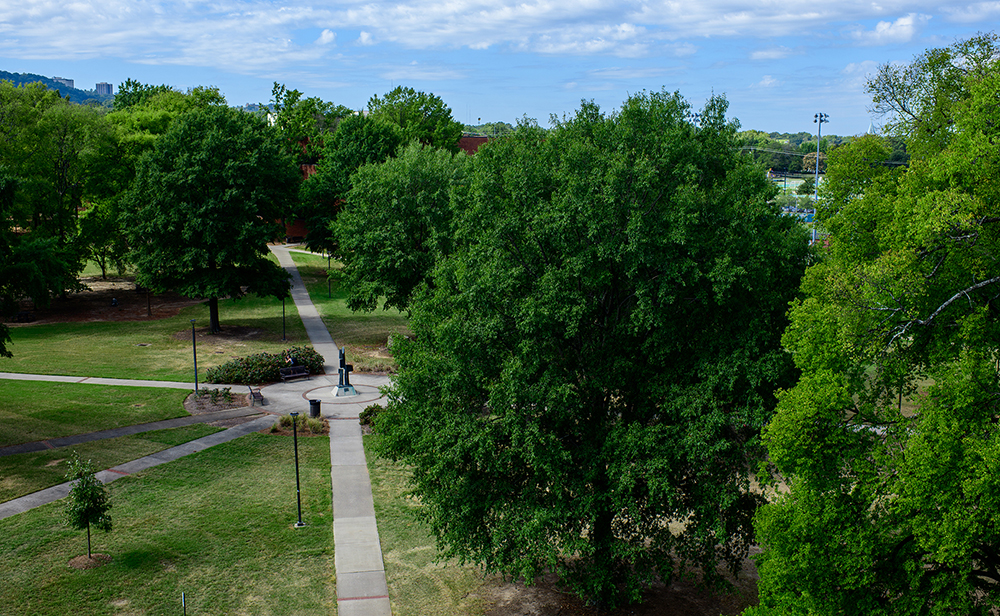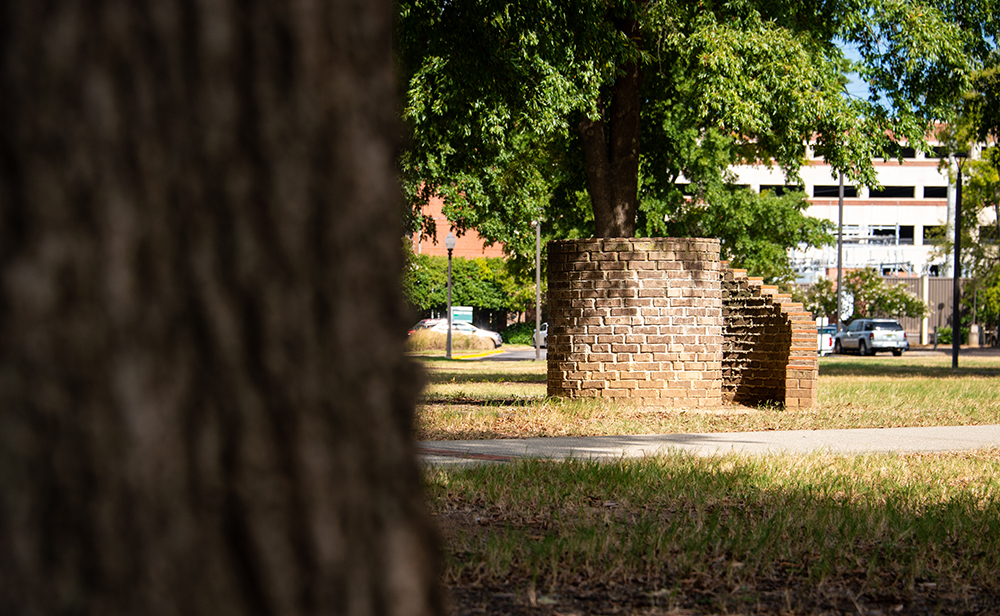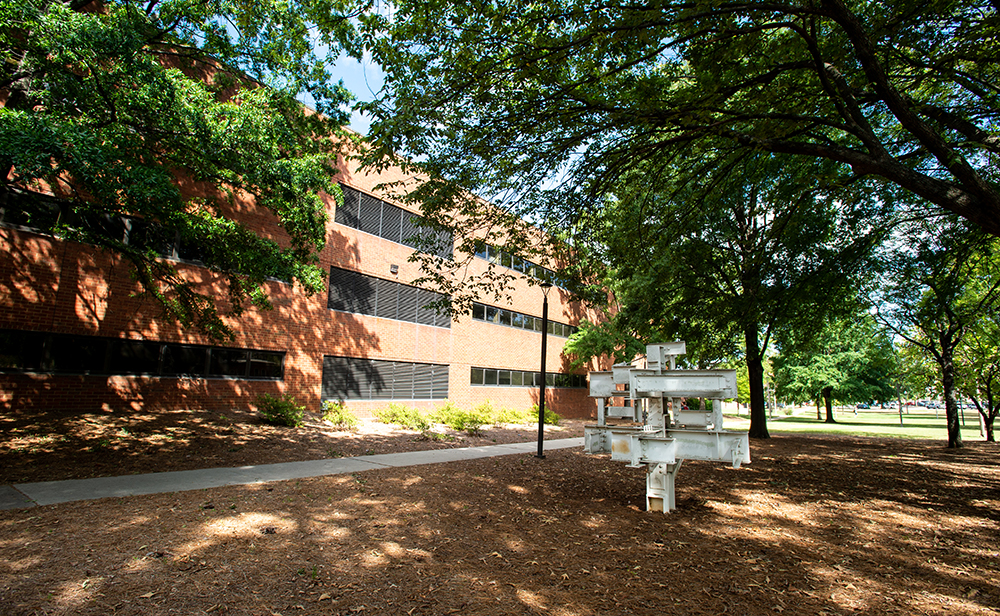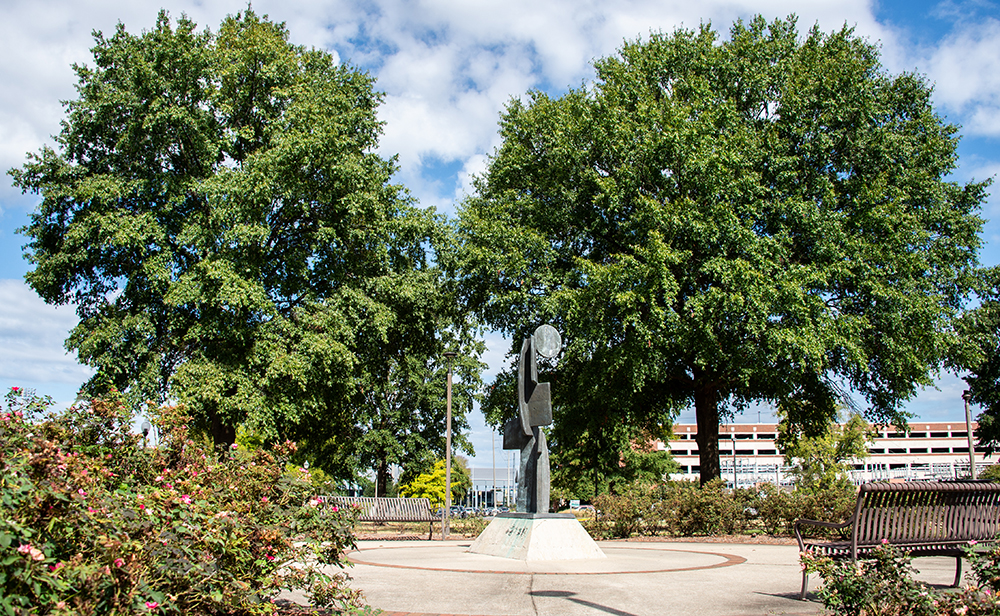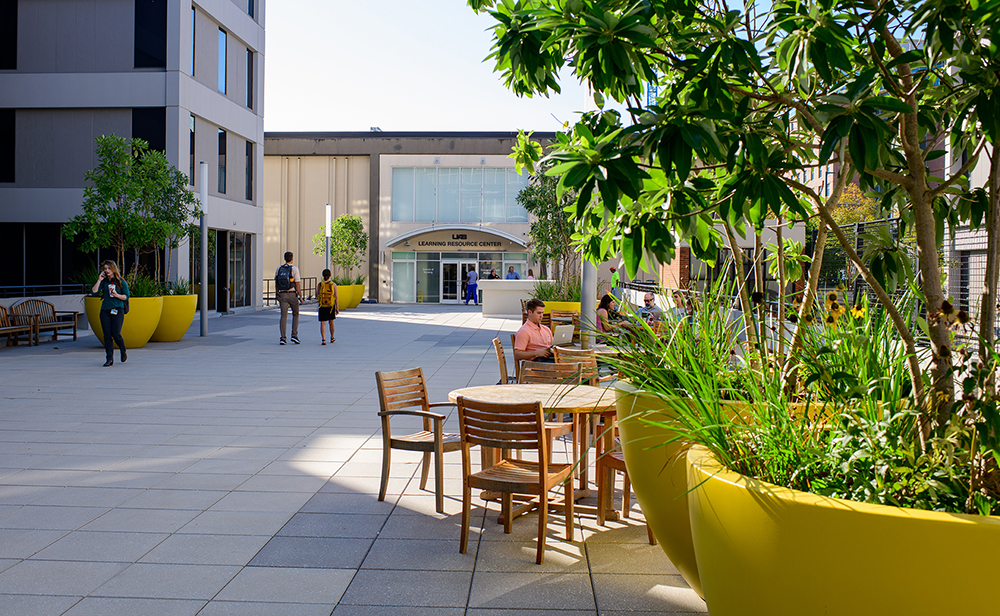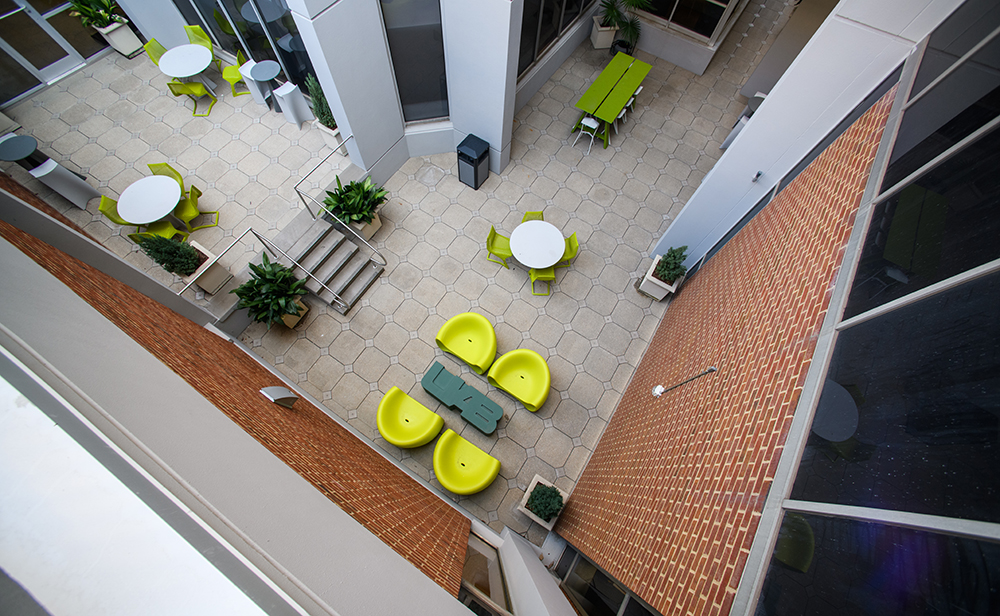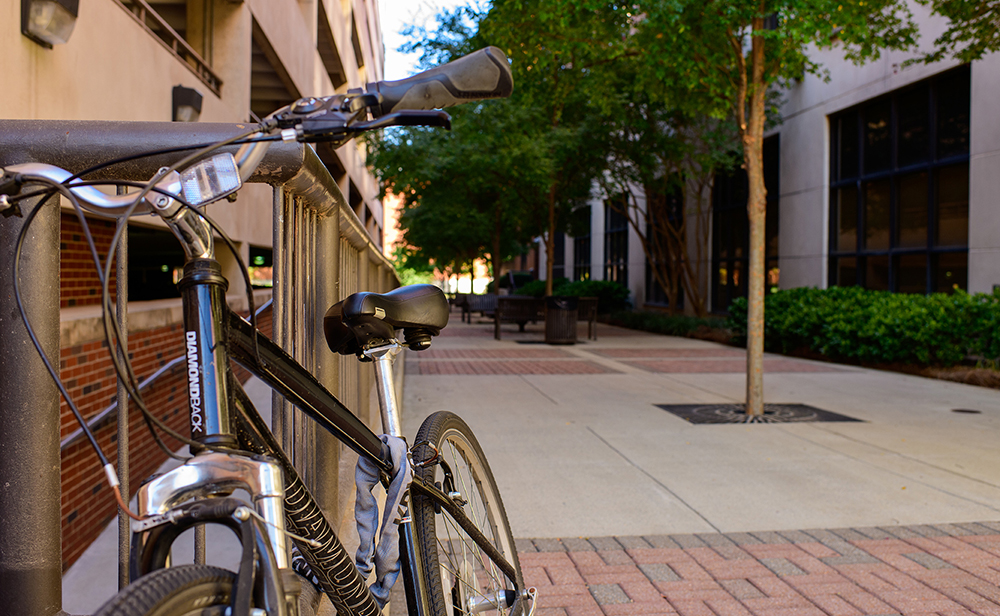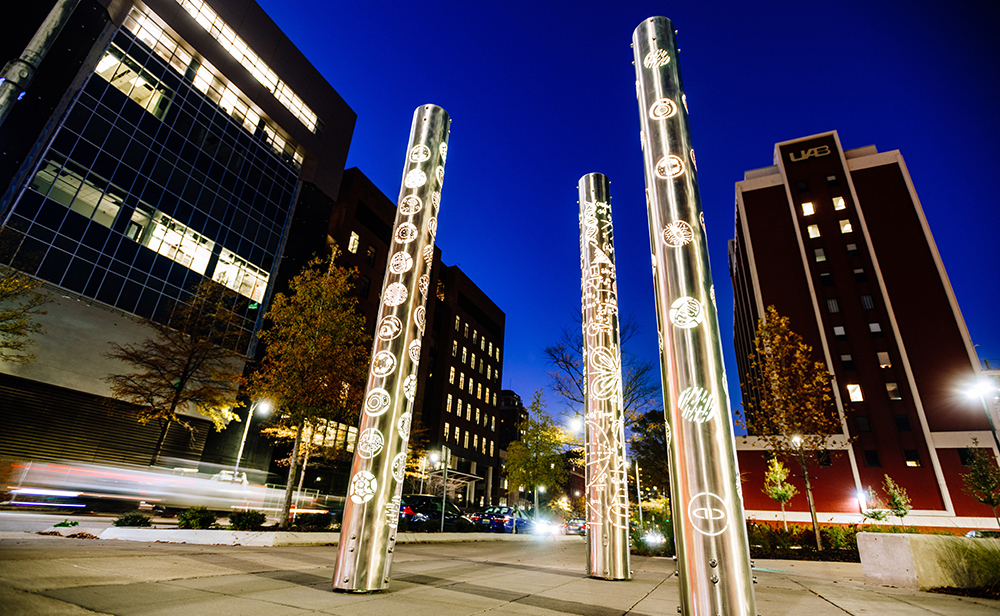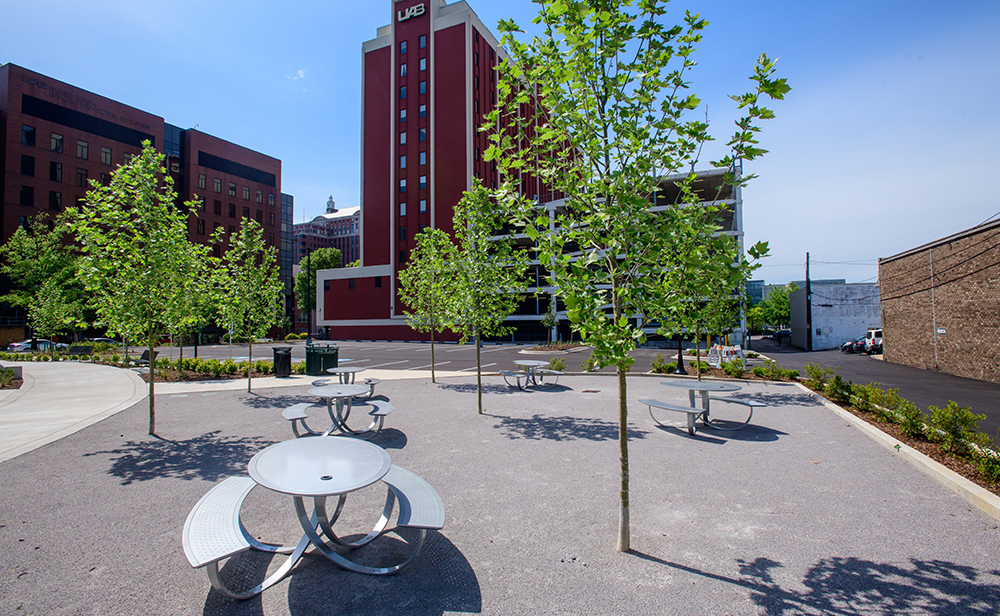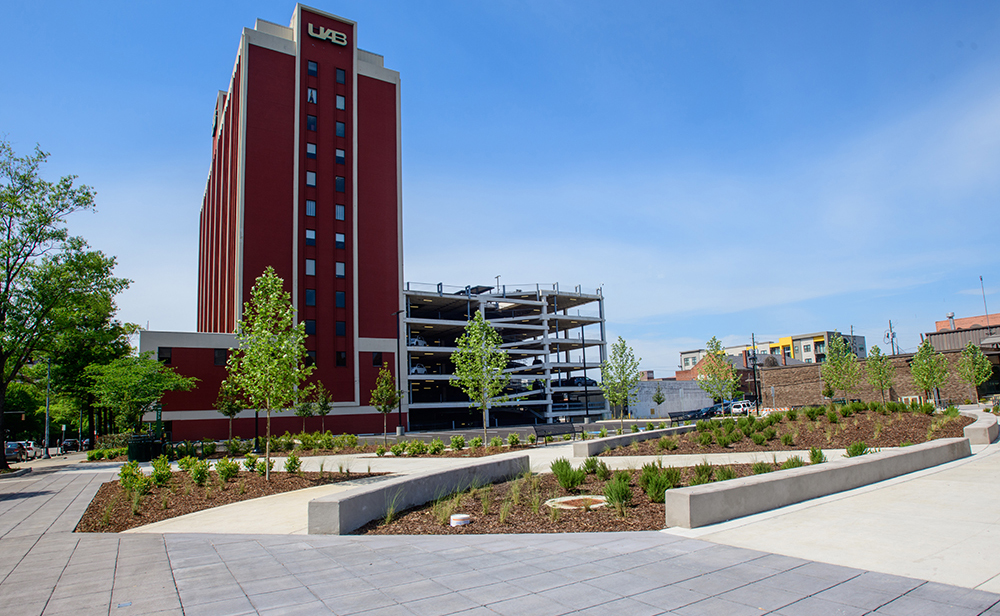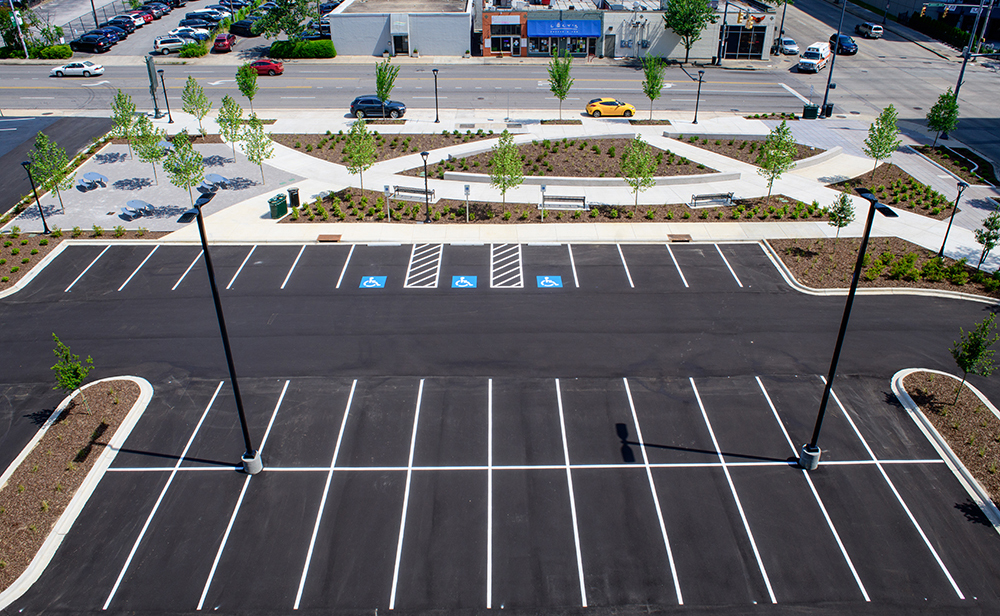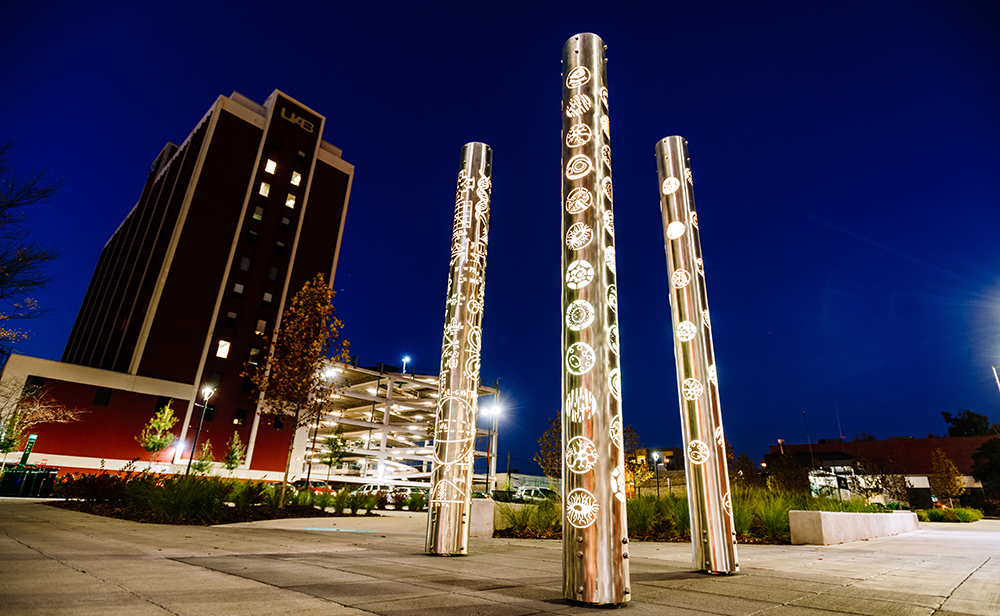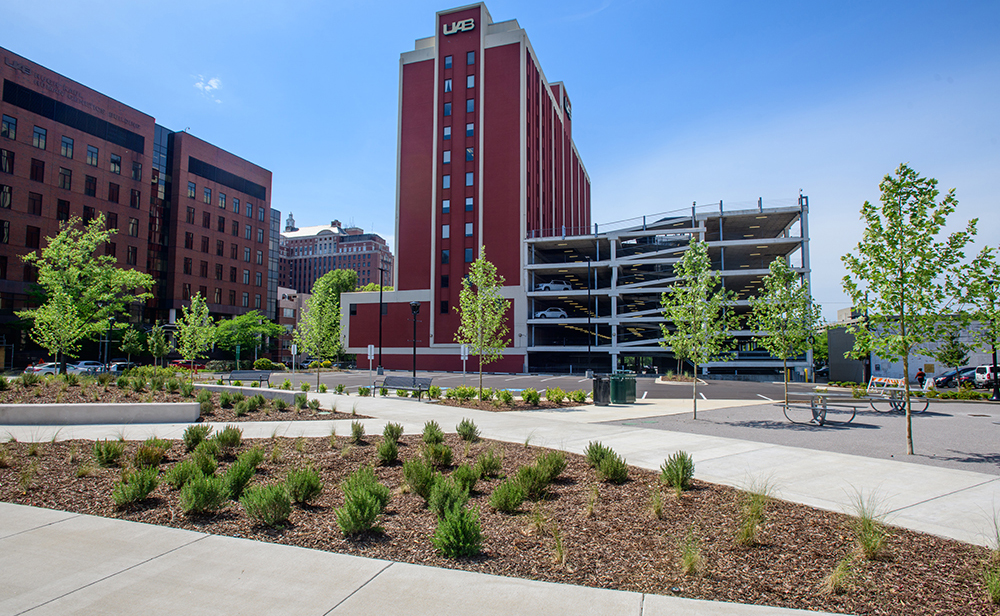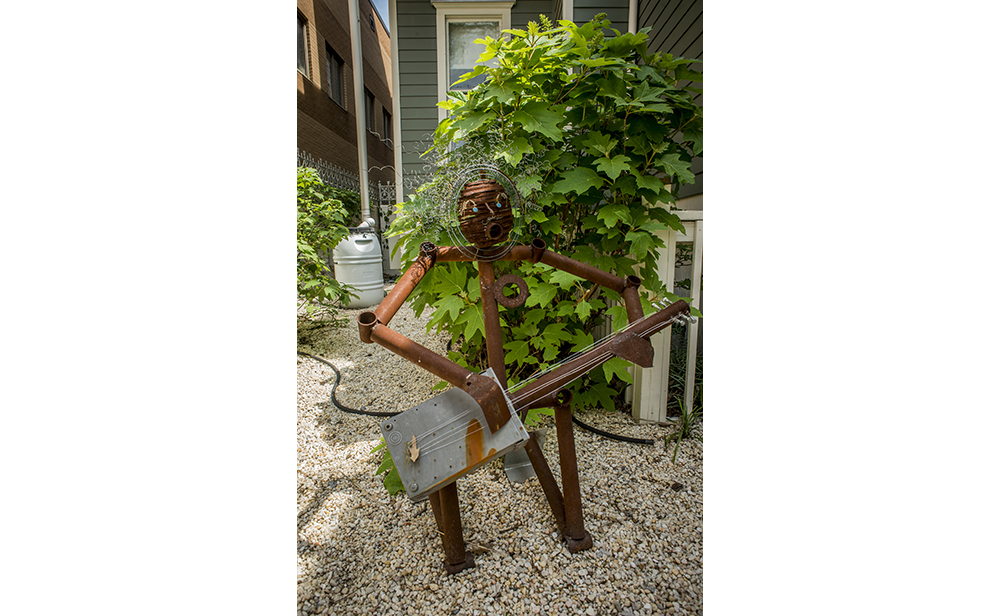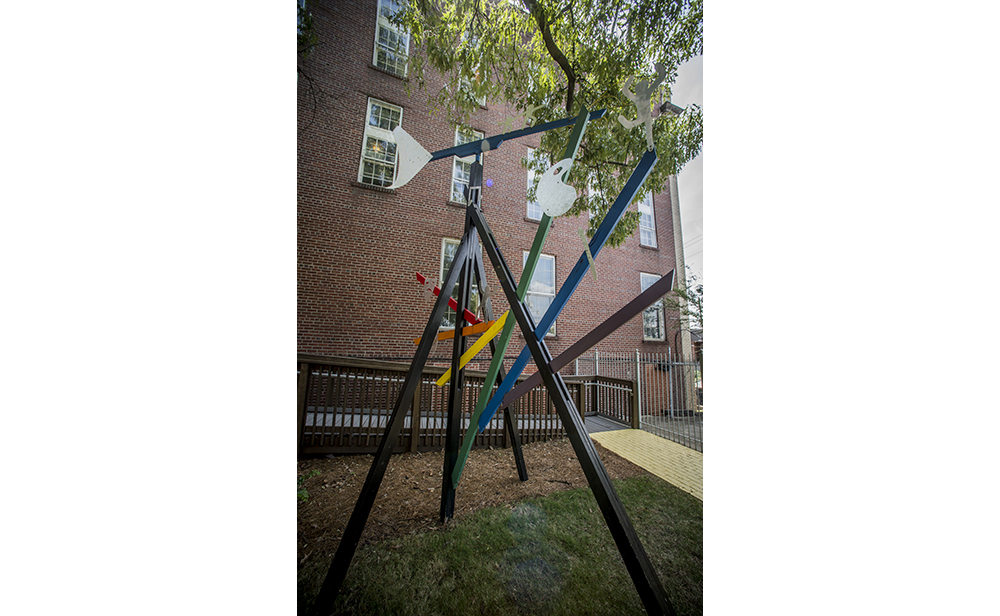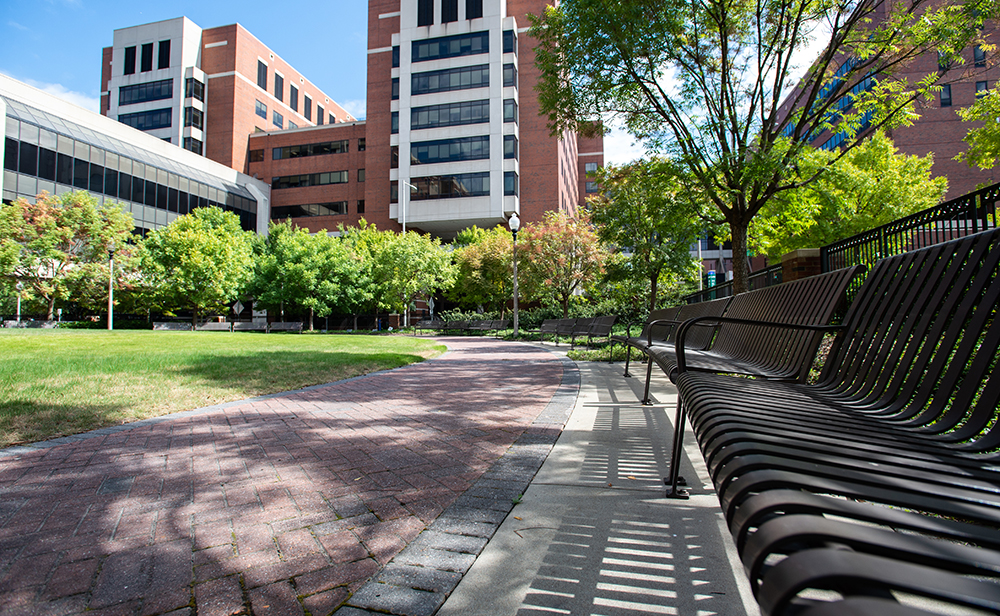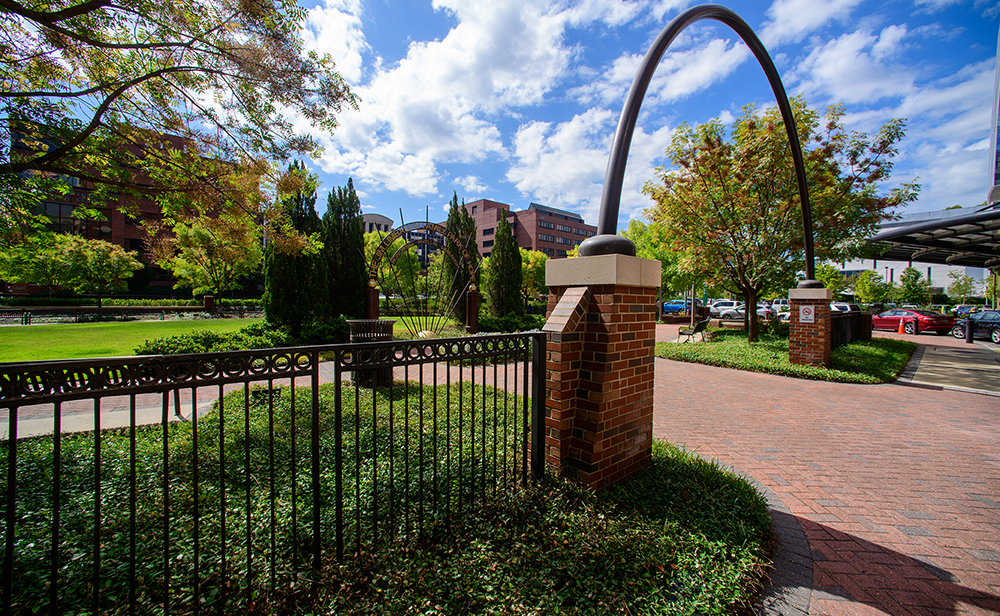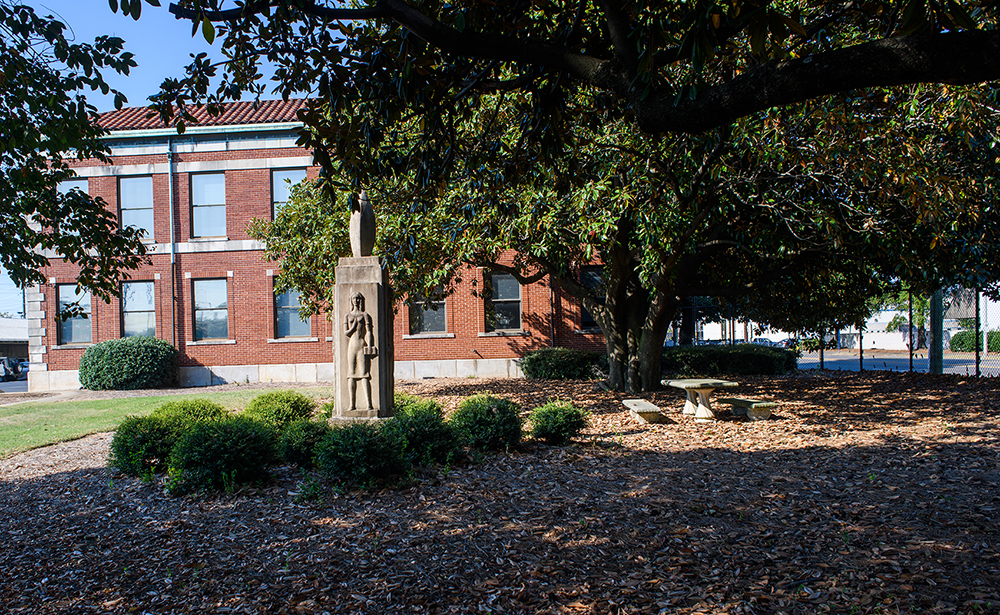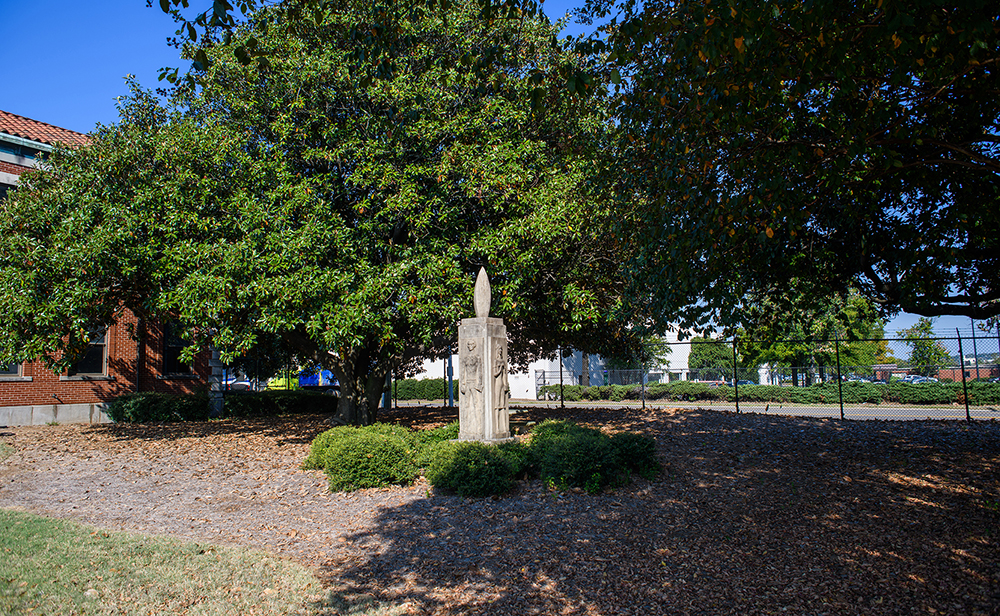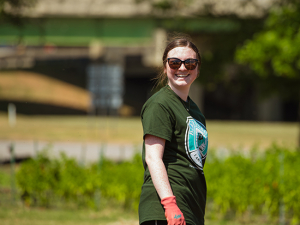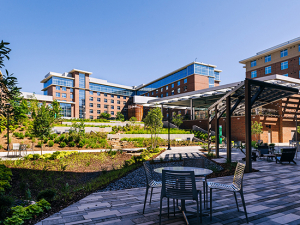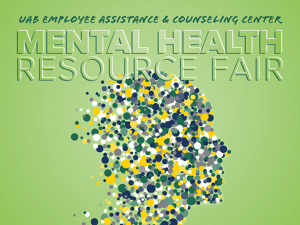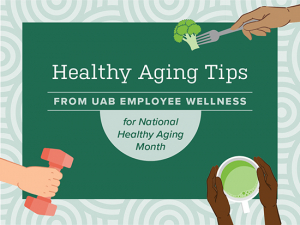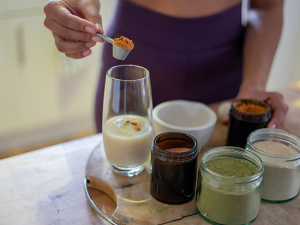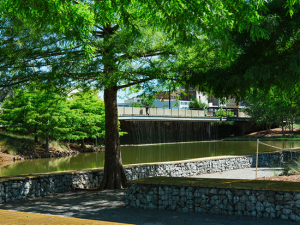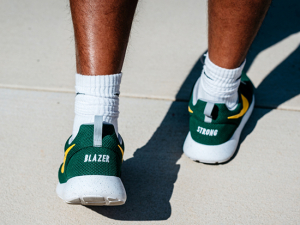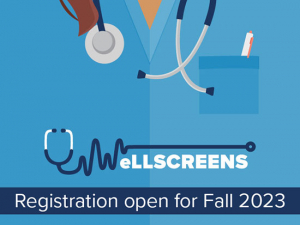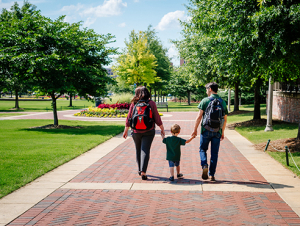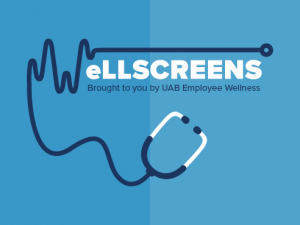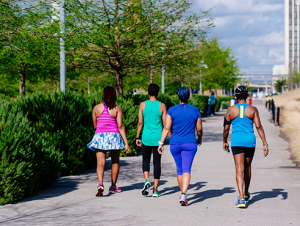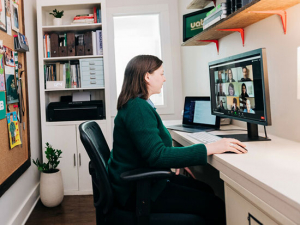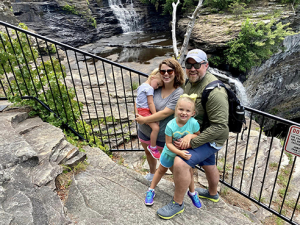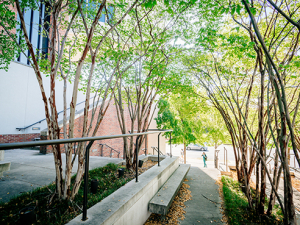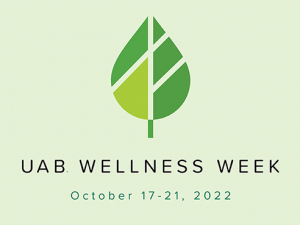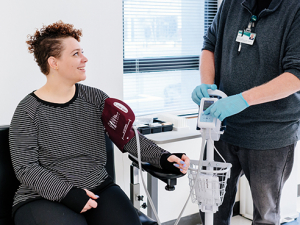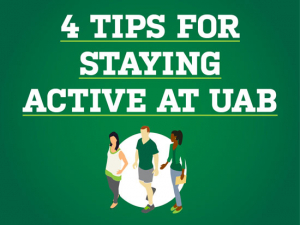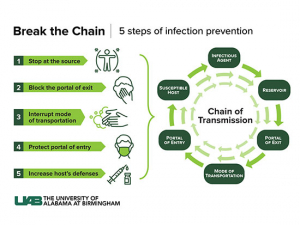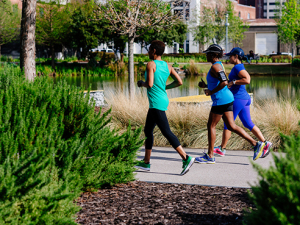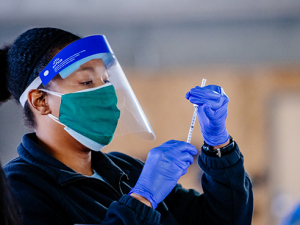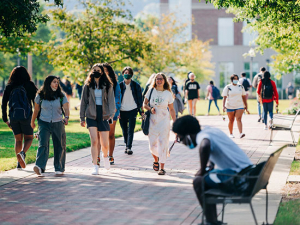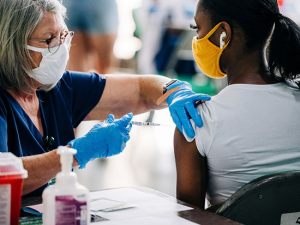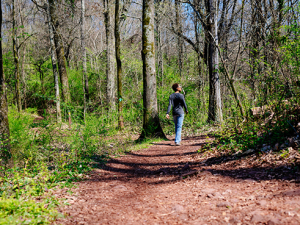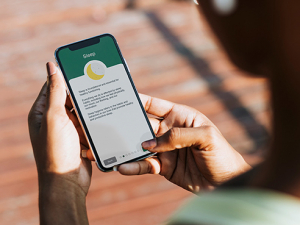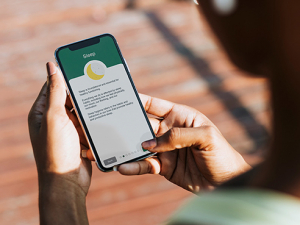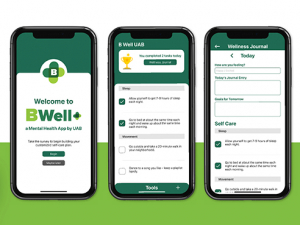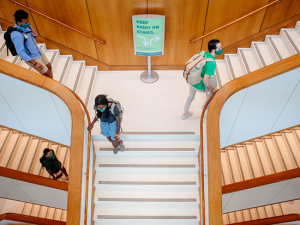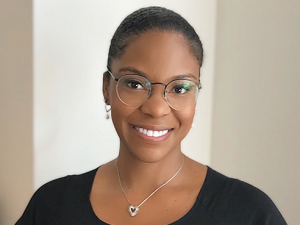Use the Google Map to find a hidden oasis near you:
On an urban campus, it’s easy to think the only jungle around is one of the concrete variety — even with access to large, popular green spaces such as the Campus Green or the Mini Park.
Having access to green spaces in an urban environment means more than easily finding a pleasant place to enjoy a lunch break. In 2019, a team of researchers from the Department of Occupational Therapy reported that spending 20 minutes in an urban park can make someone happier, regardless of whether they’re engaging in exercise during the visit.
Many of UAB’s smaller, more sequestered green spaces are home to some of the more than 4,400 healthy trees, for which UAB was again recognized as a Tree Campus USA by the National Arbor Day Foundation for the eighth year running. UAB’s trees have provided more than $125 million worth of air-pollution control, more than $126 million in soil-erosion control and recycled at least $152 million worth of water. UAB’s commitment to treasuring its trees is reflected in both the institutional strategic plan, Forging the Future, and in UAB Sustainability’s strategic plan, which includes a promise to reduce its greenhouse gas emissions by 20 percent by 2025.
Scroll down to find a little-known green space closest to you on campus to enjoy the fall weather and find a moment for mindfulness during Wellness Week Oct. 17-21.
Photos by LEXI COON, ANDREA MABRY and STEVE WOOD / University Relations
Volker Hall mezzanine
This shaded, tree-lined space has rows of concrete benches and is accessible from ground level at the northeast corner of University Boulevard and 16th Street South and from Volker Hall's first-floor lobby.
Named for UAB’s first president, Joseph Volker, Volker Hall is home to the Heersink School of Medicine and is the primary teaching facility for students during the first few years of medical school; it houses the majority of medical education classrooms and labs.
Lister Hill and Volker Hall courtyard
Accessible from the first floors of Volker Hall and the Lister Hill Library of the Health Sciences, this outdoor courtyard is partially shaded by potted foliage and building shadows with many wooden benches for eating lunch or spreading out to study.
UAB Gardens, Solar House and Sustainable Community
Opened in summer 2017 along 12th Avenue South and 17th Street at the southeast corner of campus, the UAB Gardens are home to more than 40 raised beds for the urban farmers on UAB’s workforce and murals painted by Assistant Professor Doug Baulos, Associate Professor Doug Barrett and their art students and alumni. Some plots in the Gardens grow produce for UAB’s on-campus food pantry, Blazer Kitchen; the Gardens also are home to bee condos, bat houses and an owl house designed by Art and Art History students.
The Solar House, located at the 11th Avenue South and 17th Street, was built in 2017 as part of the U.S. Department of Energy Solar Decathlon, an annual collegiate competition that challenges students to design and build high-performance, low-carbon buildings that mitigate climate change and improve quality of life through affordability, resilience and energy efficiency.
Entirely off the electrical grid, the Solar House and surrounding Sustainable Community feature a microgrid, which is housed in a shipping container featuring a mural designed and painted by students in the Department of Art and Art History, plus one of campus’ monarch butterfly waystations, opened in winter 2020, which is a designated, intentionally planted space to provide food and shelter for monarch butterflies as they migrate yearly from Mexico to Canada. Also nearby is a beehive habitat for honeybees, which are a threatened population in the United States.
The yards at Blount and Rast halls
Located just a few blocks west of the UAB Gardens sit Blount and Rast residence halls, home to second-year or higher students. Between the two halls is a sprawling green space with benches, picnic tables, shaded sidewalks, bike racks, flowerbeds, a hammock park and two sculptures, Casey Downing Jr.’s Circular XXI and John W. Parker’s Leopitsaura.
UAB’s campus is home to more than 35 statues or sculptures. Explore three walking trails showcasing the public art — each is about two miles long and takes around 30 minutes to walk. The trails can be viewed on a special Google Map.
McMahon Hall courtyard
Named for former UA System trustee John J. McMahon, Jr., McMahon Hall opened in fall 2020 on the south half of the block bordered by 9th and 10th avenues South and 16th and 17th streets. Its outdoor courtyard area features both shaded and sunny gathering spaces.
The Cultural District quad
Sequestered behind the Spencer Honors House, the Alys Stephens Center, the Hulsey Center for the Arts and the Humanities Building, this large outdoor space is home to picnic tables, benches and many of UAB’s most treasured sculptures, including Vaughn Randall’s Rosette Bobbin and Brad Morton’s The Crossing.
UAB’s campus is home to more than 35 statues or sculptures. Explore three walking trails showcasing the public art — each is about two miles long and takes around 30 minutes to walk. The trails can be viewed on a special Google Map.
School of Nursing plaza and courtyard
Find a spot to study or grab lunch from Einstein Bros. Bagels on the School of Nursing’s second-level plaza, which connects the School of Nursing with the Susan Mott Webb Nutrition Sciences Building and the Learning Resource Center.
Looking for somewhere a bit more secluded? Try the ground-level courtyard at the nursing building’s northeast corner to prop up your feet on a UAB-monogram coffee table.
Corridor between Ryals and the Ninth Avenue Parking Deck
The narrow space sandwiched between the Ryals Public Health Building and the Ninth Avenue Parking Deck, completely shaded thanks to neighboring structures, offers foliage, tables and bike racks.
Townhouse Park
Built following the razing of the 1950s Townhouse Building in summer 2019, the Townhouse Park, located at the northeast corner of University Boulevard and 20th Street South, is home to foliage and several benches and tables for employees and students to relax and grab a bite, study or take a breather. It also features three laser-cut stainless steel towers with programmed LED lighting. Each tower features art patterns conceptualized by local artist Deedee Morrison and inspired by sketches and notes from former UAB faculty, staff and students found in the UAB Archives; one features chalkboard-style mathematical equations, with the other two displaying illustrations inspired by the view through a microscope. The light towers have sequenced, program lighting that changes every few minutes.
UAB’s campus is home to more than 35 statues or sculptures. Explore three walking trails showcasing the public art — each is about two miles long and takes around 30 minutes to walk. The trails can be viewed on a special Google Map.
The ArtPlay backyard
Located on 19th Street South near Five Points South, the backyard of the Alys Stephens Center’s ArtPlay is home to two sculptures, Strummin’ Sister Steel, gifted by J. Richard Zeski, and a brightly colored kinetic sculpture created in 2011 by artist Kevin Reese and Birmingham schoolchildren.
UAB’s campus is home to more than 35 statues or sculptures. Explore three walking trails showcasing the public art — each is about two miles long and takes around 30 minutes to walk. The trails can be viewed on a special Google Map.
The Park of Hope
Located in the Medical District adjacent to the Women and Infants Center is the Jim Limbaugh Family Park of Hope. Built to honor Phyllis Limbaugh, the oval-shaped park offers benches to sit in a relaxing green space in the heart of UAB’s clinical campus.
Facilities Administration Building courtyard
Sequestered at UAB’s northwestern corner of campus, the historic Facilities Administration Building, once home to the Jefferson County Board of Education, features a shaded courtyard. In the courtyard sits an unidentified sculpture depicting figures holding books, a throwback to the building’s educational era.
UAB’s campus is home to more than 35 statues or sculptures. Explore three walking trails showcasing the public art — each is about two miles long and takes around 30 minutes to walk. The trails can be viewed on a special Google Map. If you know the name or artist behind any of the pieces marked in gray on the map, email reporter@uab.edu.
